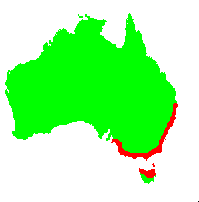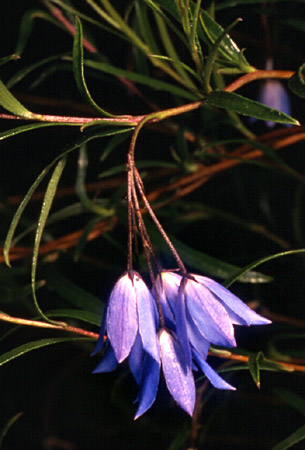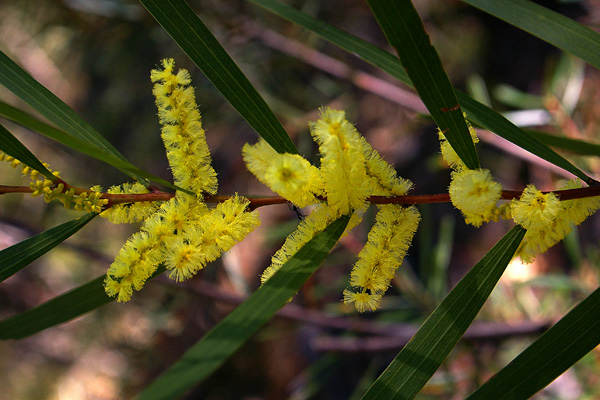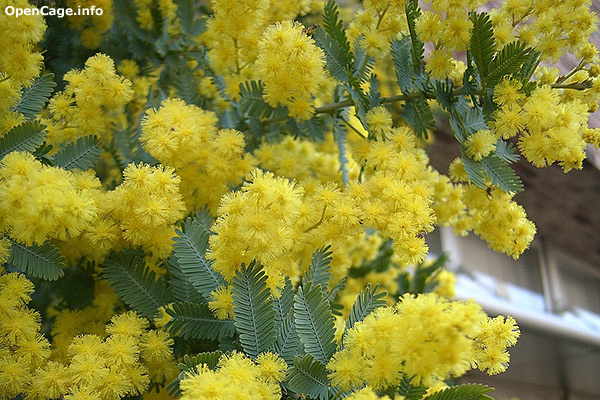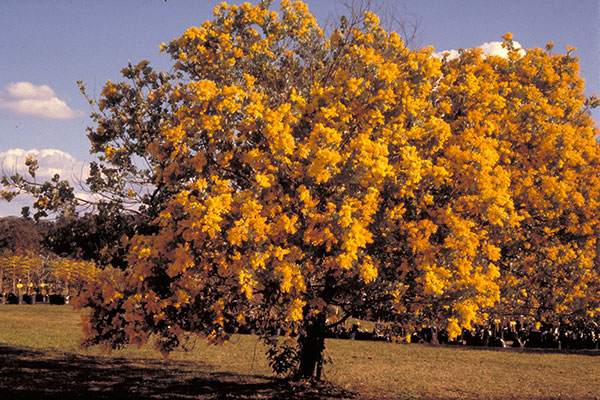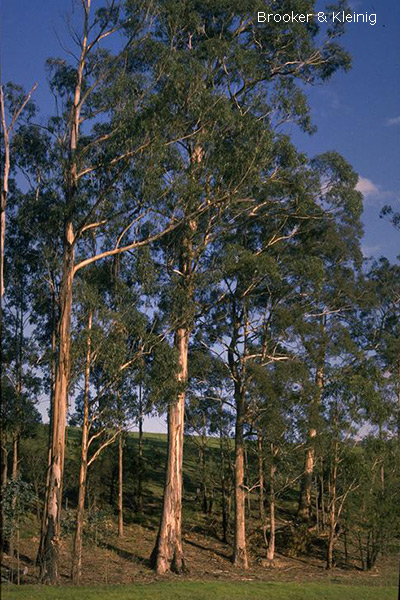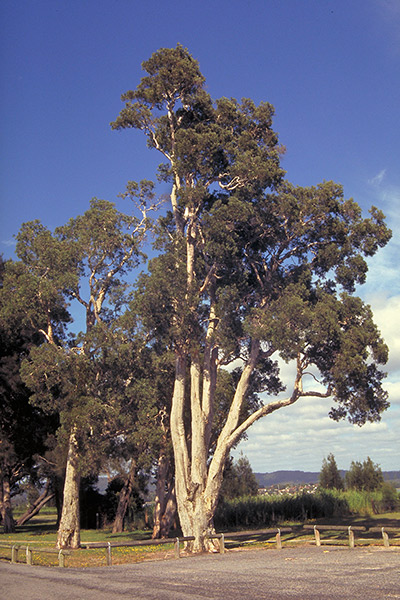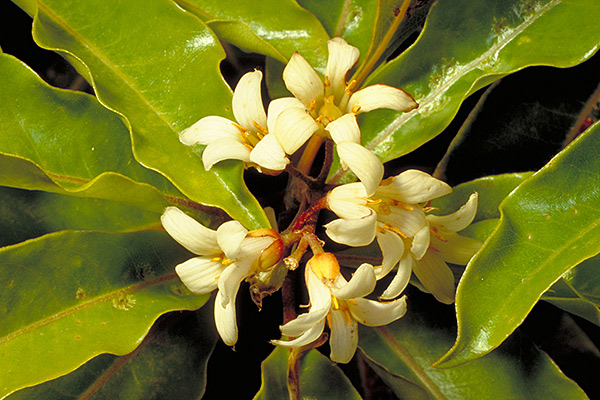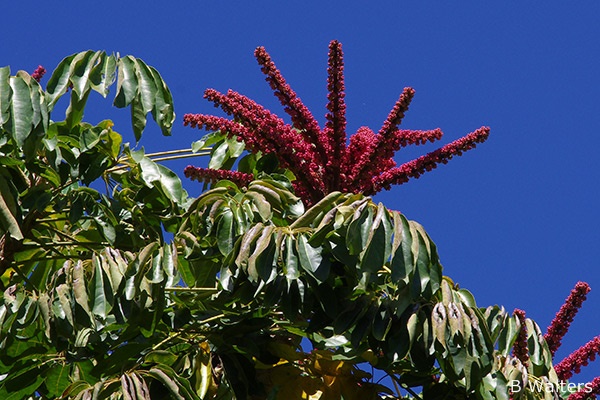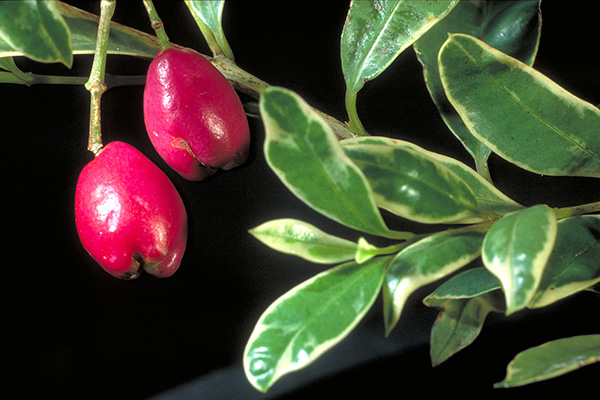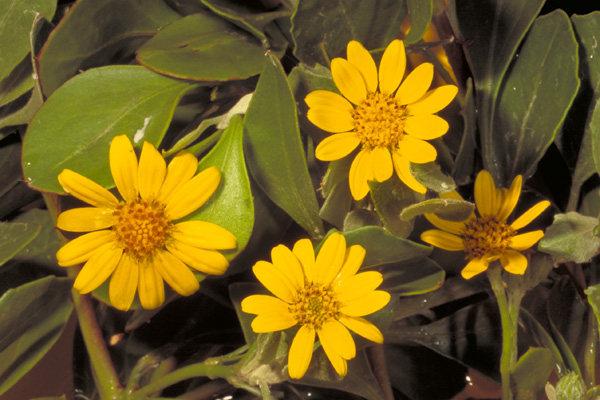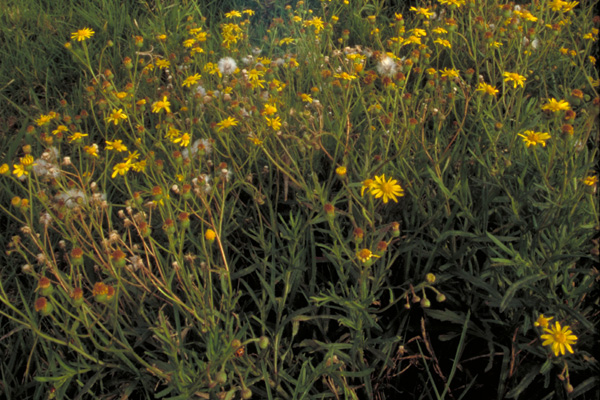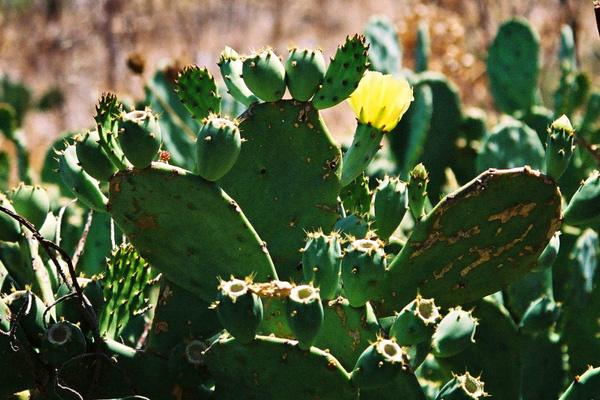General Description:
Leptospermum is a genus of about 83 species, all but three occurring in Australia. They are commonly known as ‘tea trees’ due to the practice of early European settlers of using the leaves of some species as a tea substitute.
Leptospermum laevigatum is usually a large, bushy shrub that can reach 5 metres in height by a similar spread. Leaves are grey-green and are generally oval-shaped 15-30 mm long by 5-8 mmm wide.
The white, 5-petalled flowers are fairly typical of the genus being circular (up to 20 mm diameter) with numerous small stamens surrounding the central stigma. Flowers which appear in late winter to spring are followed by small, woody fruits containing many seeds; the fruits remain unopened until they are removed from the plant or the plant dies.
L.laevigatum is reasonably common in cultivation where the greyish foliage is an attractive feature. It is a hardy shrub for moist soils in a range of climates and is particularly useful in coastal areas as it is tolerant of salt spray. Plants prefer full sun or partial shade and may be pruned severely if necessary.
Note: this species is a serious environmental weed in southern Western Australia and in South Africa and it would probably be best to not plant it outside of its natural range.
At least one form with variegated foliage is in cultivation. It is known as ‘Flamingo’ or the ‘Cranbourne Form’ and is a shrub 1-5 to 2 metres high by 1.5 metres wide. Another variegated form is known as ‘Raelene’ – this may be the same plant as ‘Flamingo’ under a different name.
Propagation is easy from both seed and cuttings. However, the variegated form(s) can only be propagated from cuttings as it will not come true from seed.
The publication transferred 22 species of Leptospermum, which lack woody fruits that are usually deciduous, into Gaudium. Although this revision has been taken up by some state herbaria, it has not yet been accepted in the Australian Plant Census, which ANPSA accepts as the authority on plant taxonomy. For this reason we have retained Leptospermum as the accepted name for the time being.
* Wilson, Peter G. & Heslewood, M.M. (3 May 2023), Revised taxonomy of the tribe Leptospermeae (Myrtaceae) based on morphological and DNA data. Taxon 72(3).
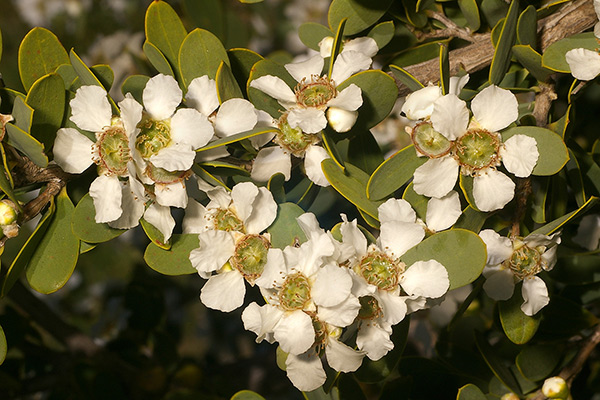
Leptospermum laevigatum
Photo: Brian Walters
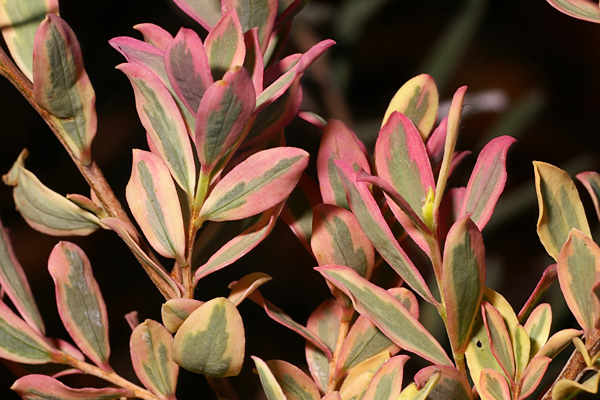
Foliage of Leptospermum laevigatum ‘Flamingo’
Photo: Brian Walters
 Australian Native Plants Society (Australia)
Australian Native Plants Society (Australia)